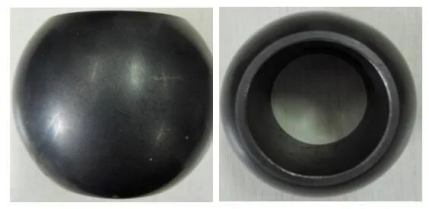-
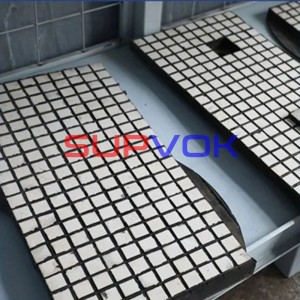
Wear resistant ZTA Ceramic composite liner, ZTA+Rubber+Metal
Wear-resistant ceramic lining plate:
Alumina, silicon carbide and zirconia ceramics are used as wear resistant layers.
Auxiliary metal layers and rubber layers are used as buffers.
Common types:
Rubber composite ceramic lining plate
Metal composite ceramic lining plate
-

ZTA Ceramic Plates, ZTA+Rubber+Metal
Wear-resistant ceramic lining plate:
Alumina, silicon carbide and zirconia ceramics are used as wear resistant layers.
Auxiliary metal layers and rubber layers are used as buffers.
Common types:
Rubber composite ceramic lining plate
Metal composite ceramic lining plate
Product structure
The ceramic rubber steel plate composite liner uses a heat vulcanization process to vulcanize toughened ceramic sheets into a steel plate groove equipped with special rubber, and the steel plate groove is equipped with countersunk bolts. This liner is a customized product that can be made into various shapes. Composite materials of various thicknesses are selected according to wear conditions to make the liner, forming a strong wear-resistant layer. The operating temperature of this product is – 50 ℃ – 100 ℃.
The properties of each material in the three-in-one wear-resistant ceramic lining plate complement each other, forming a wear-resistant and impact resistant panel, which has incredible wear-resistant and impact resistance properties. It can be used in heavy wear industries such as sand and gravel, mining, and other high impact areas.
Product Features
1. The three-in-one wear-resistant ceramic lining plate adopts modular production and assembly, which can replace high wear areas;
2. Provide stud bolt fixation and weldable installation methods;
3. The special rubber heat vulcanization process not only ensures that the ceramic blocks embedded in the rubber layer are firmly bonded, but also acts as a buffer layer to prevent the ceramic blocks from cracking;
4. The shape, size, and thickness of the ceramic block or backing plate can be customized according to your specific working condition or use.
Scope of application
The ceramic rubber plates are widely used as an anti wear lining on equipment with heavy wear and strong impact when transporting bulk materials under normal temperature.
-
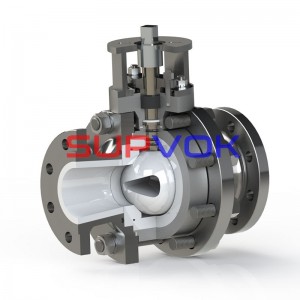
Special ceramic valve
As a professional supplier of ceramic ball valves in the world, KSINO is not only committed to the production of various ceramic valves, but also has been committed to the research and development of new ceramic materials. Y-TZP and Ce-TZP are widely used because of their high strength, good wear resistance, good chemical stability and other characteristics. However, due to their thermal shock resistance, they cannot be used under high temperature conditions. As the ball core of valve, its toughness is limited, which may lead to broken ball in case of jamming or locking. In order to meet the increasingly complex and harsh service conditions of ceramic valves, especially the higher service temperature, we have developed a magnesium oxide partially stabilized zirconia ceramic (Mg-PSZ) with excellent thermal shock resistance, and after continuous research and experiment, continuous innovation, we have developed a composite ceramic material with excellent thermal shock resistance and toughness comparable to metal.
The composite ceramic material developed by our company is made of metal and ceramic powder mixed and sintered. The metal elements can be Ti, Cr, Ni, Co, etc., which can be used alone or in combination, or other alloy powders. The selected metal elements have no chemical reaction with ceramic powder, the thermal expansion coefficient is close, and the wetting ability between metal and ceramic particles is good. Ceramic elements provide the ability to bear loads and wear resistance, while metal elements endow them with impact resistance toughness. Therefore, the composite ceramic material has a series of excellent properties, such as high strength and hardness, good toughness, good wear resistance, small coefficient of thermal expansion, high modulus of elasticity, good thermal shock resistance and good chemical stability, which can not be obtained by using only metal or ceramics. Although its corrosion resistance is reduced due to the addition of metal elements, its toughness and thermal shock resistance are significantly improved, which can not only meet the requirements for use under high temperature conditions, but also avoid broken balls due to jamming or locking.
Mixed sintering of metal and ceramic powder
Wedge gate valve
Wear resistant adjustable pulverized coal valve
Gate valve
Globe valve
Slag discharge check valve
Wear resistant expansion device
Three-way reversing valve with form of cast stone wear-resistant ball
Manual and electric wear and corrosion resistant ball valve
Plate gate valve
Wear resistant slag discharge gate valve
Electric wear-resistant pulverized coal gate valve
Wear resistant and anti scaling gate valve
Throttle valve
Combined stop throttle valve
Wear resistant throttle valve
Dry ash gate valve -
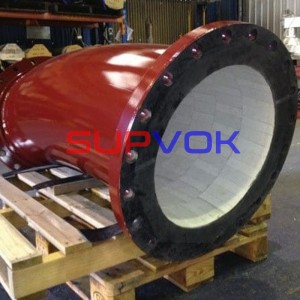
Alumina, NSiC, ZTA Ceramic lined pipes
The core technology of KSINO wear-resistant and corrosion-resistant products comes from US and Germany. KSINO’s products have been in leading position in Chinese ceramic technology, ceramic metal composite technology, wear-resistant pipeline manufacturing, belt cleaning technology and other fields.
It is the common sense that no product in the world can adapt to all working conditions. On the basis of fully mastering the rules of wear and corrosion, it is correct to select the most appropriate materials. Therefore, KSINO has developed a wide range of wear-resistant and corrosion-resistant products. From metal materials to non-metallic materials, we will continue to develop more and better wear-resistant and corrosion-resistant products in the future.
-
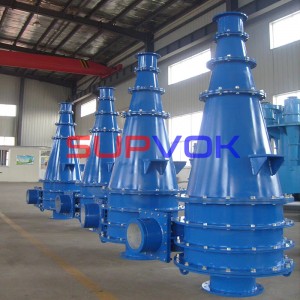
-
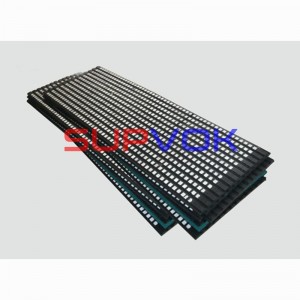
Ball mill ceramic rubber plates
Rubber ceramic composite lining plate
Two-in-one lining plate
Three-in-one lining plate
-
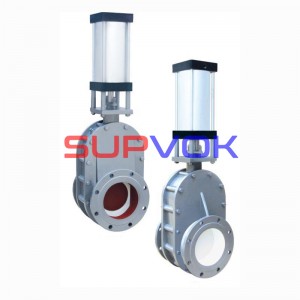
Advanced ceramic valve
Advanced ceramic valve
The applications of metal valves has a history of more than one hundred years. Although the structure and materials have also been improved during the period, they are limited by the conditions of the metal materials themselves. It is increasingly unable to meet the needs of severe working conditions such as high wear and strong corrosion under special environment. The frequent leakage caused by short service life and poor sealing affects the stability of the system operation to a certain extent.
-
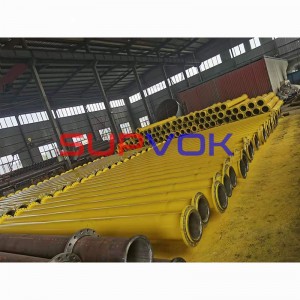
Silicon Carbide Ceramic lined pipes
The core technology of KSINO wear-resistant and corrosion-resistant products comes from US and Germany. KSINO’s products have been in leading position in Chinese ceramic technology, ceramic metal composite technology, wear-resistant pipeline manufacturing, belt cleaning technology and other fields.
It is the common sense that no product in the world can adapt to all working conditions. On the basis of fully mastering the rules of wear and corrosion, it is correct to select the most appropriate materials. Therefore, KSINO has developed a wide range of wear-resistant and corrosion-resistant products. From metal materials to non-metallic materials, we will continue to develop more and better wear-resistant and corrosion-resistant products in the future.
-

Special ceramic lined products, accessories, Apex and Spigot, cones, slurry pump guards, feeding chute, etc
Ceramic lining wear-resistant and corrosion-resistant products
Power plant steel lined silicon carbide wear-resistant pipe
-
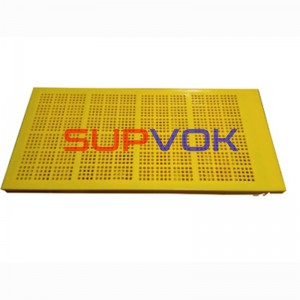
Polyurethane Sieve Plates, flow screen panel
Polyurethane sieve plate is a kind of mesh product made of polyurethane.
The hole shape of sieve plate are slot, rectangle, circle and square.
The main application industries are coal washing plants, coking plants, mines, power plants, dredging companies, metallurgical, petroleum, petrochemical and others.
The main applied equipment is vibrating screen. -

Ash and slag discharge valve
Wedge gate valve
Wear resistant adjustable pulverized coal valve
Gate valve
Globe valve
Slag discharge check valve
Wear resistant expansion device
Three-way reversing valve with form of cast stone wear-resistant ball
Manual and electric wear and corrosion resistant ball valve
Plate gate valve
Wear resistant slag discharge gate valve
Electric wear-resistant pulverized coal gate valve
Wear resistant and anti scaling gate valve
Throttle valve
Combined stop throttle valve
Wear resistant throttle valve
Dry ash gate valve -
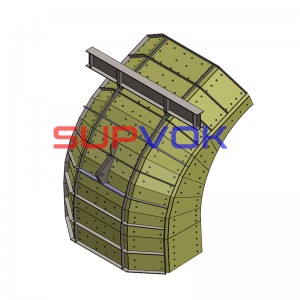
Wear resistant chute ceramic composite liner
Wear-resistant ceramic lining plate:
Alumina, silicon carbide and zirconia ceramics are used as wear resistant layers.
Auxiliary metal layers and rubber layers are used as buffers.





